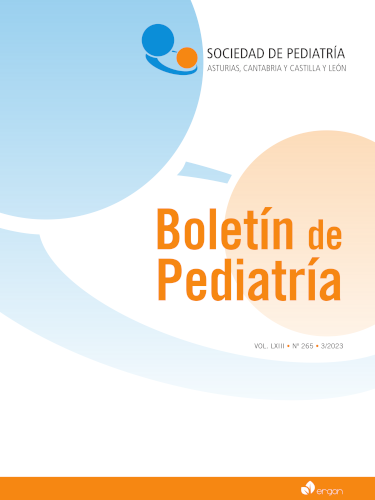Abstract
Introduction. Hemolytic uremic syndrome (HUS) is a rare and serious pathology in pediatrics. It is classified as “typical” or “atypical” HUS depending on its etiopathogenesis. It is characterized by the triad: microangiopathic hemolytic anemia, thrombopenia and renal failure, with the presence of schistocytes in peripheral blood being characteristic. Case report. 13-month-old male with no personal or family history of interest. Consultation due to high fever for 5 days, catarrhal symptoms, asthenia, jaundice, vomiting, diarrhea and oliguria. Physical examination: Poor general condition, Stage-I arterial hypertension, pale-jaundiced muco-cutaneous, tachycardia, polypnea, hypoventilation at the right lung base and pretibial edema. Complementary tests: Blood analysis: Hb 8.4 g/dl, platelets 20,000/mm3, leukocytosis with left deviation, urea 186mg/dl, creatinine 3.27 mg/dl [eGFR(Schwartz_2009): 10.5 ml/min/1.73 m2], elevated CRP, PCT and LDH, low haptoglobin. Systemic/urinary sediment: proteinuria 0.95 mg/mg, glomerular hematuria. Peripheral blood smear: 5% Schistocytes. Direct Coombs test: positive. Chest x-ray: right pulmonary basal condensation. In the presence of the triad: microangiopathic hemolytic anemia, thrombopenia and renal failure, HUS was diagnosed in the context of pneumonia, initiating supportive treatment in the PICU, furosemide and empirical antibiotic therapy. ADAMTS13 activity and Shiga-toxin determination: negative. Blood culture: + Streptococcus pneumoniae. Worsening renal function, requiring continuous veno-venous hemodiafiltration and administration of eculizumab. He showed progressive improvement and was discharged with diagnosis of HUS secondary to pneumococcal sepsis. Follow-up in Pediatric Nephrology consultation, currently suffering from chronic kidney disease (stage G3A2). Conclusions. It is important to carry out early diagnosis and treatment to improve vital and renal functional prognosis, establishing initial management protocols and multidisciplinary follow-up.

This work is licensed under a Creative Commons Attribution-NonCommercial 4.0 International License.
Copyright (c) 2023 Boletín de Pediatría
